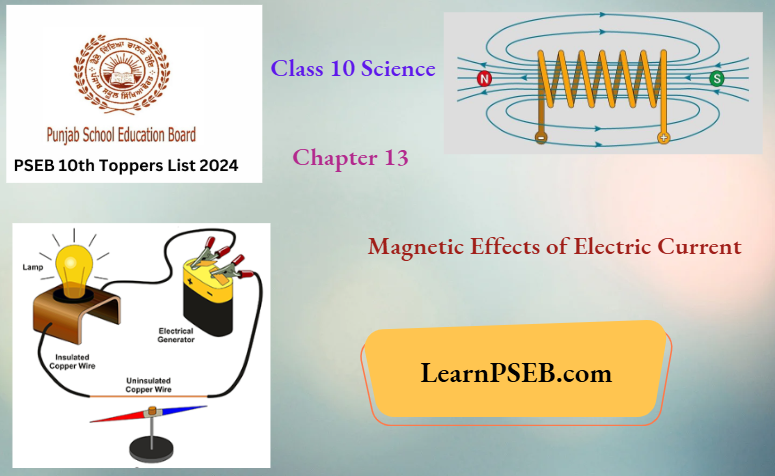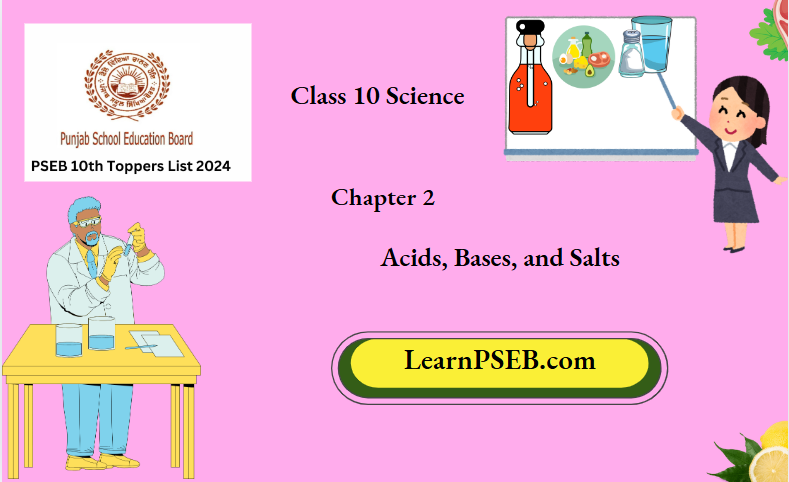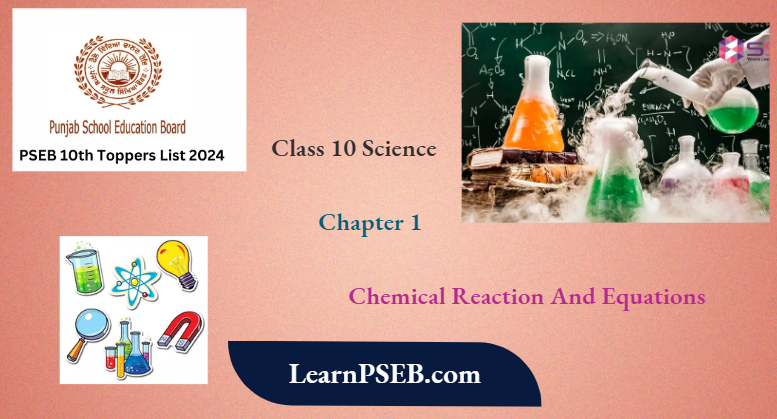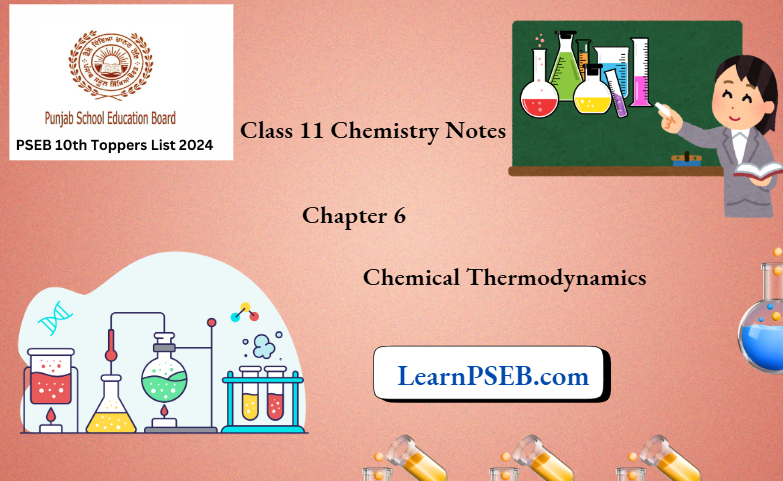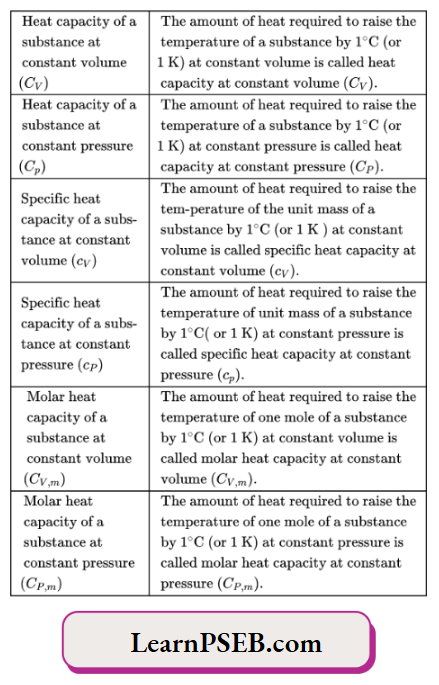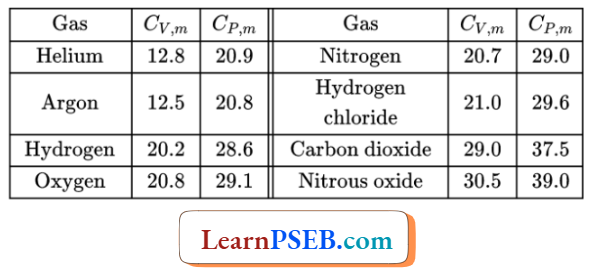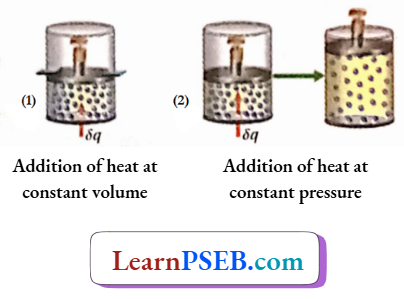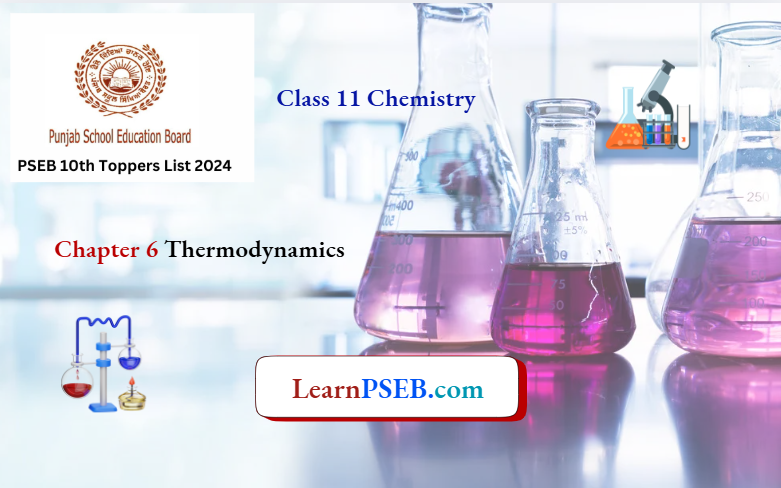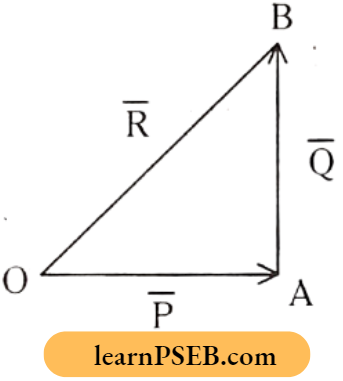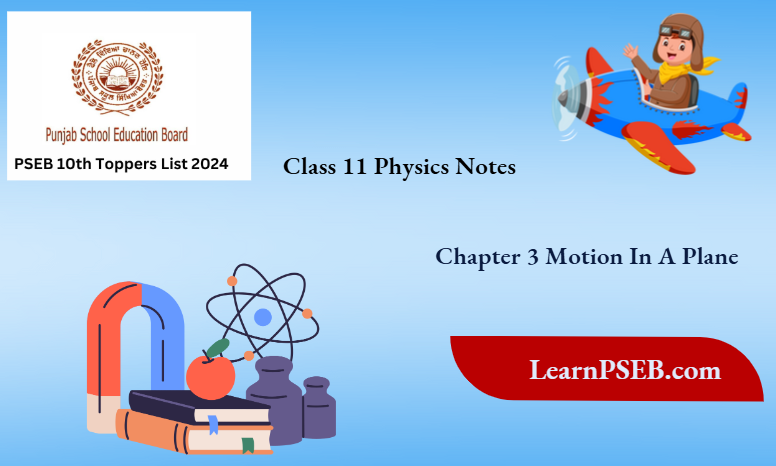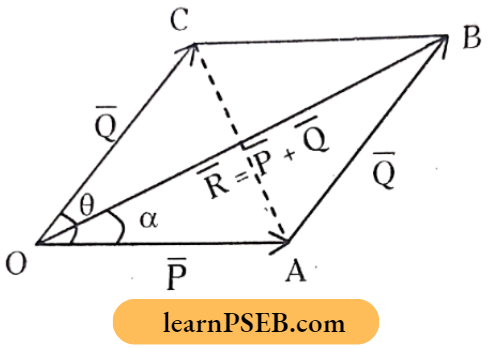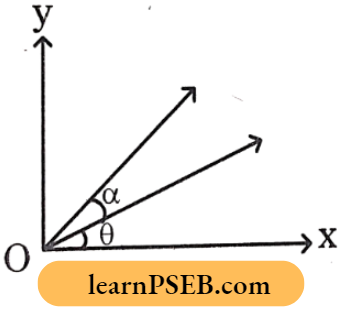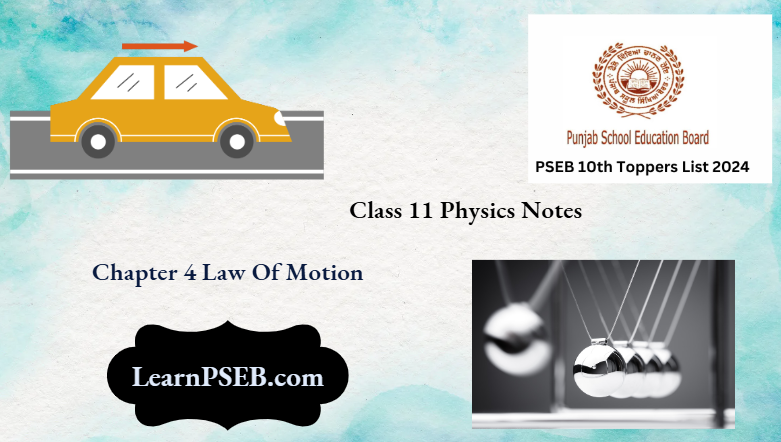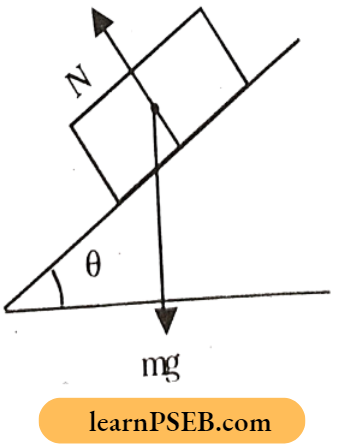Question 1. Find the number of waves formed by a Bohr electron in one complete revolution in its second orbit.
Answer: Number of waves
⇒ \(=\frac{\text { circumference of the orbit }}{\text { wavelength associated with the moving electron }}\)
⇒ \(=\frac{2 \pi r}{\lambda}=\frac{2 \pi r}{(h / m v)}\)
Since \(\lambda=\frac{h}{m v}\)
⇒ \(=\frac{2 \pi}{h} \times(m v r)=\frac{2 \pi}{h} \times \frac{n h}{2 \pi}=n\)
So the number of waves formed in the second orbit = 2
Question 2. Show that an orbital cannot accommodate more than two electrons in it.
Answer:
Each electron present in an atom is expressed by four quantum numbers. Again, according to Pauli’s exclusion principle, no two electrons in an atom can have the same values for all four quantum numbers (n, l, m, and s).
Now for a certain orbital, the quantum numbers n, l, and m have definite values. So, the electrons present in that orbital must have different values for the spin quantum number. But the spin quantum number ‘s’ has only two possible values.
These are \(+\frac{1}{2} \text { and }-\frac{1}{2}\)
Structure of Atom Class 11 Important Questions
Hence, the maximum that can be accommodated in an orbital is 2. For example, values of the quantum numbers of two electrons in Is -orbital no. of electrons are as follows—
Question 3. Mention the similarity and dissimilarity that exist in the significance, conveyed by the given two sets of quantum numbers
Answer:
In the given sets of quantum numbers n and l have identical values. So, two orbitals as indicated by these two sets of quantum numbers belong to the same principal energy level (shell) and also to the same subshell.
As the orbitals belong to the same sub-shell (viz., d -subshell), they will have the same energy.
However, because of the difference in their values of magnetic quantum numbers, they will have different orientations in space.
Under the influence of a magnetic field, the electrons present in these two orbitals will differ in their energy content.
Read And Learn More Class 11 Chemistry Solutions
Question 4. Write the values of quantum numbers of all the electrons in the 3Li -atom.
Answer:
Number of electrons of 3Li -atom = 3. Therefore, its electronic configuration: ls22s1.
Now, for Is -subshell, n = 1 , l = 0 and m = 0 and for 2s -subshell, n = 2 , l = 0 and m = 0.
Therefore, the values of the quantum numbers of the 3 electrons ofLi-atom are:
Structure of Atom Class 11 Important Questions
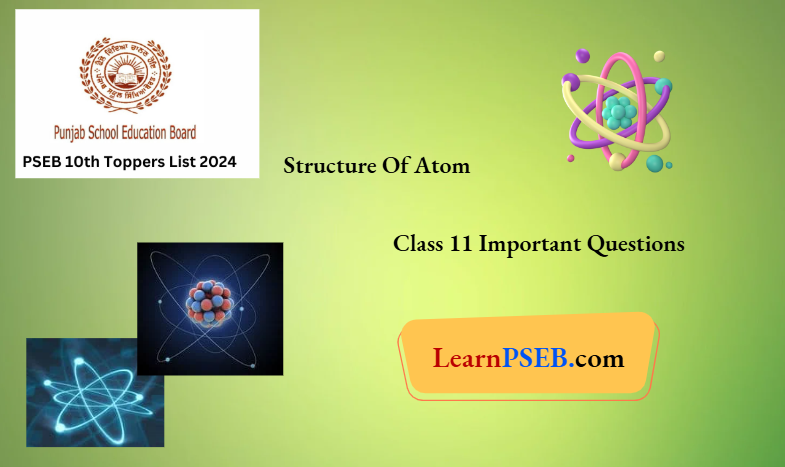
Question 5. Identify all the quantum numbers of the electrons in the -subshell of a carbon atom.
Answer:
Atomic number of carbon = 6.
∴ Its electronic configuration: ls22s22p2
In case of 2p -subshell, n = 2, l = 1 and m = -1 , 0 , +1 .
Thus it appears that, the maximum number of electrons that may be present in 2p -subshell = 6.
But this subshell of carbon contains only 2 electrons.
According to Hund’s rule, these 2 electrons will remain in two separate orbitals as odd electrons, each of which will have the same spin.
Therefore, the values of n, l, m, and s of these 2 electrons will be
Question 6. Identify the orbitals having the following quantum numbers using the symbols s, p, d, f:
- n=4, l=2
- n=3,l=1
- n=2, l=0
- n=5, l=3
- n=1,l=0
- n=3,l=2
Answer: For s, p, d, and /-orbitals, the respective values of azimuthal, quantum number, l are 0, 1, 2, and 3.
Again the principal energy levels are designated by the values of the principal quantum number.
On the basis of their information, the orbitals characterized by the given quantum numbers have been identified.
- n = 4 , l = 2: 4d orbital
- n = 3, l = 1 : 3p orbital
- n = 2,f = 0:2s orbital
- n = 5, l = 3: 5f orbital
- n = 1 , l = 0 : Is orbital
- n = 3 , Z = 2: 3d orbital
Question 7. Explain why 2d -and 3/-orbitals do not exist.
Answer:
For an orbital designated by 2d, quantum numbers will have the values of n = 2 and 1 = 2.
But for n = 2d can have the values of 0 and 1. So 2D -orbital has no real existence.
For 3f orbital, n = 3 and 1 = 3. But for n = 3, l will have
Question 8. If the uncertainty in position and momentum of a particle of mass ‘m’ are equal, then ascertain the minimum uncertainty in its velocity.
Answer:
⇒ \(\Delta x \cdot \Delta p\frac{h}{4 \pi}\)
Or, \(\Delta p \cdot \Delta p\frac{h}{4 \pi}\)
Or, \(\Delta p\frac{1}{2} \sqrt{\frac{h}{\pi}}\)
Or, \(m \times \Delta v \frac{1}{2} \sqrt{\frac{h}{\pi}}\)
Or, \(\Delta v \frac{1}{2 m} \sqrt{\frac{h}{\pi}}\)
So the minimum uncertainty in its velocity
⇒ \(=\frac{1}{2 m} \sqrt{\frac{h}{\pi}}\)
Question 9. Isotopes of a certain element are identical in their chemical properties—why? Atomic spectra of elements are called fingerprints—why? What are isosters? Give example.
Answer:
Isotopes
Isotopes of an element have the same number of protons in their nucleus and the same number of electrons in the extranuclear part.
Thus, they have the same electronic configuration in their valance shell and hence identical chemical properties.
The atomic spectra (line spectra) of each element are unique. The line spectra of the two elements resemble each other. Hence, these are regarded as the fingerprints of the elements and thus help in their identification.
Molecules or ions with the same number of atoms and also the same number of electrons are said to be sisters.
Example: CO and N2 form a pair of isosters (each molecule contains 2 atoms and 14 electrons).
Question 10. Which of the following relationships directly expresses Bohr’s concept of a hydrogen atom? E = hv, \(m v r=\frac{n n}{2 \pi}\) in) E = me2, E2-E1 = hv \(\lambda=\frac{h}{m v}.\) A = A.mv Write the values of Planck’s constant in CGS and SI units. Indicate the mass of the photon. Are all photons associated with the same quantity of energy?
Answer:
The following two relationships directly express Bohr’s concept in the case of hydrogen atoms:
\(\text { (2) } m v r=\frac{n h}{2 \pi} \text { and (4) } E_2-E_1=h v\)
Relation (2) states that an electron revolves around the nucleus only in those permitted orbits for which the angular momentum is an integral multiple of \(\)
Relation (4) expresses the idea that whenever an electron jumps from one stationary orbit to another, there is either an emission or absorption of energy which is equal to the difference of the energies associated with the two orbits.
Planck’s constant, h = 6.626 x 10-27 erg-s (in CGS unit) = 6.626 x 10-34 J-s (in SI unit)
In the case of light radiation, a quantum is called a photon. Again a quantum means a definite small amount of energy. So, the photon has no mass. It denotes only a definite but small amount of energy,
The energy associated with a quantum radiation [i.e., a photon) is given by E = hv (where v = frequency of radiation).
Since different radiations have different characteristic values of their frequencies, the energy of all photons cannot be the same. For example, the energy of a photon of blue light is greater than that of red light, since; Ared > Ablue or Ablue < Ared
Class 11 Chemistry Chapter 2 Structure of Atom Questions
Question 11. Calculate the no. of electrons, protons & neutrons present in ammonium ion phosphate Ion. Name a species that Is isosteric with N20.
Answer:
1 ammonium ion \(\left(\mathrm{NH}_4^{+}\right)\)
= 1 N-atom +4 H-atoms -1 electron.
∴ Total number of electrons present in the ion = 7 + 4 x1-1 =10
Number of protons = 7 + 4×1 =11
Number of neutrons = (14-7) + 4×0 =7
1 phosphate ion \(\left(\mathrm{PO}_4^{3-}\right)\)
= 1 P-atom+4 O-atoms +3 electrons
∴ Total number of electrons associated with P04
ion = 15 + 4×8 + 3=50
Number of protons = 15 + 4 x 8 = 47
Number of neutrons = (31- 15) + 4(16- 8) = 48
A species isosteric with N20 isC02
Question 12. “Electron is an essential constituent of atoms of all elements” —explain. Why was it necessary to consider the existence of neutrons in the nucleus of an atom? Write the nuclear reaction related to the discovery of neutrons.
Answer:
“Electron is an essential constituent of atoms of all elements”
The value of charge (e ) and mass (m ) of the electron always remain the same irrespective of the source of their emission.
In the discharge tube experiment, the e/m ratio for the negatively charged particles (electrons) constituting the cathode rays was found to be the same irrespective of the nature of the cathode or the nature of the gas taken in the discharge tube.
Thus it can be said that electron is the essential constituent of all atoms.
After the discovery of proton and electron as subatomic particles, the mass of a proton on an atomic scale has been taken as 1 unit and the mass of an electron as zero.
Under this condition, with the exception of ordinary hydrogen, the atomic mass of no other element could be explained in terms of the number of protons present in the atom of an element.
For example, the atomic mass of sodium =23(H = 1) i.e., an atom of sodium is 23 times heavier than a proton. But it has been proved that the atom of sodium contains only 11 protons which can only account for 11 units of mass.
In order to explain the difference of (23-11) = 12 units of mass, the assumption of the presence of a neutral sub-atomic particle of unit mass in the atom became a necessity.
Nuclear reaction associated with the discovery of neutron \({ }_4^9 \mathrm{Be}+{ }_2^4 \mathrm{He} \longrightarrow{ }_6^{12} \mathrm{C}+{ }_0^1 n.\)
Question 13. What is meant by line spectra of atoms? How many lines are observed in the visible region of the hydrogen spectrum? Calculate the wave number of the first line.
Answer:
line spectra of atoms
When an electric discharge is passed through a gaseous element enclosed in a discharge tube under low pressure and the emitted light is analyzed by a spectroscope, the spectrum consists of a large number of lines (with different frequencies) which are grouped into different series. The complete spectrum obtained is known as line spectra or atomic spectra.
In the visible region of the hydrogen spectrum, four lines are obtained: Ha [red], Hg [bluish green], (blue), and Hg (violet). The series consisting of these lines is called the Balmer series.
The equation for wave number in the hydrogen spectrum is given by,
\(\bar{v}=R\left[\frac{1}{n_1^2}-\frac{1}{n_2^2}\right], R=1.09678 \times 10^5 \mathrm{~cm}^{-1}\)
For the first line in the Balmer series, n1 = 2, n2 = 3
∴ \(\bar{v}=1.09678 \times 10^5\left(\frac{1}{2^2}-\frac{1}{3^2}\right)=1.09678 \times 10^5\left(\frac{1}{4}-\frac{1}{9}\right) \mathrm{cm}^{-1}\)
\(=1.09678 \times 10^5 \times \frac{5}{36}=1.5733 \times 10^4 \mathrm{~cm}^{-1}\)
Question 14. Write three differences between electromagnetic waves and matter waves. Show that the circumference of the ‘ n ‘th electronic orbit is ‘ n’ times the de Broglie wavelength of the wave associated with the motion of the electron i.e., 2nrn = nX.
Answer:
According to Bohr’s theory, the angular momentum of a revolving electron in the nth orbit is given by,
\(m v r_n=\frac{n h}{2 \pi} \quad \text { or, } m v=\frac{n h}{2 \pi r_n} \cdots[1]\)
Again according to the de-Broglie equation,
\(\lambda=\frac{h}{m v} \quad \text { or, } m v=\frac{h}{\lambda} \cdots[2]\)
From equations [1 ] and [2] we have \(\frac{n h}{2 \pi r_n}=\frac{h}{\lambda} \text { or, } 2 \pi r_n=n \lambda \text { (Proved) }\)
Structure of Atom Class 11 Questions and Answers
Question 15. Give electronic configurations of the following species and show which of these contain the same number of electrons: Cl-, N3″, P3 “, K+, Na+, Mg2+, Ar, S2-, Ne, 02~, Al3+, Ca2+. In an atom of an inert gas, the difference between the number of p -electrons and s -electrons is equal to the number of d -electrons present in that atom. Identify the inert gas and indicate its atomic number.
Answer:
So, N3-, Na+, Mg2+, O2-, Ne, and Al3+ have the same number of electrons (10), so they are isoelectronic. The electronic configuration of each of them ls22s22p6.
Again, Cl “, P3-, K+, Ar, S2-, and Ca2+ have the same number of electrons (18), so they are isoelectronic. Their electronic configuration is:
\(1 s^2 2 s^2 2 p^6 3 s^2 3 p^6\)
The inert gas is krypton (Kr) whose atomic number is 36, and has an electronic configuration:
ls22s22p63s23p63d104s24p6
Total number of s -electrons = 8 and total number of p -electrons = 18
∴ Difference in the number of s and p -electrons = 18- 8 = 10 = number of d -electrons.
Question 16. What is the maximum number of electrons present in subshell (s), for which n + l = 3? Will the p -electrons present in the N -atom have the same energy? What is the effect of the magnetic field on these electrons?
Answer:
According to the given conditions, If n = 3, then 1 = 0 (since n + l = 3). These two values of quantum numbers indicate 3s -subshell. 3s subshell can hold a maximum of 2 electrons.
Again, if n = 2, then l = 1 (since n + l = 3). These two values of quantum numbers denote 2psubshell. 2p -subshell may contain a maximum of 6 electrons.
So, a total of (2 + 6) = 8 electrons will be present in subshells for which n + l = 3.
The electronic configuration of N-atom (atomic number = 7 ) is given by: ls22s22p3. The electrons present in the p -subshell will occupy singly px, py, and pzorbitals respectively, i.e., they remain unpaired.
As these are degenerate orbitals, the energy ofthese three electrons will be the same.
As px, py, and pz -orbitals have different orientations in space, the effect of the magnetic field on the electrons present in these orbitals becomes different.
Consequently, it causes a difference in energy. Because of this difference in energy, fine splitting of the spectral lines occurs.
Hence, it may be stated that under the influence of the applied magnetic field, the energies of the electrons of the N-atom become different.
Structure of Atom Class 11 Questions and Answers
Question 17. How would you show that the maximum number 4 0 +1 +i of electrons that can be accommodated in an orbit with a principal quantum number is 2n2? In an atom, the 4f-subshell is completely filled up with electrons. How many electrons in that sub-shell will have the value zero for their magnetic quantum number?
Answer:
The electrons, revolving around the nucleus in an atom, are described by four quantum numbers [viz., n, l, m, and s ]. For a given value of (n), (l) can have n values [these are / = 0, 1, 2…..(n-1)]. This shows that the number of subshells present in the ‘ n ’ th orbit = n.
Again the number of orbitals present in any subshell =(2/+l). Moreover, each orbital may contain a maximum of 2 electrons. Based on this concept, the maximum number of electrons that a particular principal energy level can accommodate can be calculated.
Thus for the principal quantum number’ n values of l =0,1,2…..(n-1). For 1 = 0, number oforbitals present = 2×0 + 1 = 1 For1=1, number oforbitals present = 2×1 + 1 = 3 For 1 = 2 , number oforbitals present = 2×2 + 1 = 5 For / = (w — 1) , number of orbitals present = 2(n- 1) +1 = (2n- 1).
∴ Total number of orbitals in n -th energy level
=l+3+5+7+ … + (2n- 1)
\(=\frac{n}{2}\{1+(2 n-1)\}=n^2\)
Thus the total number of electrons in ‘ n ‘th energy level = n2 x 2 = 2n2.
For the f-sub-shell, l = 3, and for l = 3, possible values of m = -3, -2, -1, 0, +1, +2, +3 This shows that the f-subshell consists of 7 orbitals.
Out of these, only one orbital is associated with magnetic quantum number, m = 0. This orbital has the capacity to accommodate a maximum of 2 electrons.
Question 18. One predicts the following sets of quantum numbers for some of the electrons present in an atom. State with reasons, which are permissible and which are not. The mass number of an element is twice its atomic number. 2p-subshell of the atom of that element contains 4 electrons. Find the number of protons, neutrons, and electrons present in that atom. What is the valency of that element?
Answer:
Among the given sets of quantum numbers only and are possible but are not permitted.
n = 2, / = 2, m = +2, s = \(+\frac{1}{2}\)
If n = 2 then 1 has only two possible values 0 and 1.
So, the value of 1 cannot be 2.
n = 4, l = 0, m = +1 , s = \(+\frac{1}{2}\)
If l= 0, m = +1 is not possible.
n = 3,l= 2,m = +1,s = 1 ; the value of s may be either +- or . It can never have the value 1.
n = 5, l = 4, m = —3 , s = \(+\frac{1}{2}\)
In the case of this set of quantum numbers, the values of n, /, m, and s are quite consistent.
n = 0, l = 0 , m = 0, s = \(-\frac{1}{2}\) ; The value of the principal quantum number n can never be zero.
n = 1,1-0, m = 0 , s = \(+\frac{1}{2}\)
Values of n,l, m, and s are consistent.
According to the given condition, the electronic configuration ofthe element is lsz2sz2pÿ2pj,2p’.
So, the atomic number of that element is 8. Obviously, the element is oxygen.
O-atom can attain stable electronic configuration by accepting two electrons in its outermost shell. So, its valency is 2.
So, as given in a mass number of the element = 2×8 = 16. Hence, the number of neutrons =16-8 = 8. Number of electrons =8.
PSEB Class 11 Chemistry Structure of Atom Questions
Question 19. Why does 2p -subshell have the capacity to accommodate more electrons than 2s -publicly? Arrange the following sets of electrons in order of decreasing energy.
- n = 4, l = 0, m = 0, s = \(+\frac{1}{2}\)
- n = 3, l = 1,
- m = 1 , s = -i
- n = 3, / = 2, m = 0, s = \(\frac{1}{2}\)
- n = 3 , Z = 0, m = 0, s = \(-\frac{1}{2}\)
Which is the lowest principal energy level that permits the existence of the ‘g’ sub-shell?
Answer: For s -sub-shell,l = 0. So, the number of orbitals in this sub-shell =21+1 = 2×0+1 =1.
- An orbital can accommodate a maximum of 2 electrons.
- So, the maximum number of electrons that can be accommodated in 2s -sub-shell = 2.
- Again for p -subshell, 1 = 1. So, the number of orbitals in this sub-shell = 21+ 1 =2x 1 + 1 =3.
- Maximum number of electrons that can be accommodated in 2p -sub-shell =2×3 = 6
- So, 2p -subshell contains more electrons than 2s.
The relative order of energies of various sub-shells can be predicted by the following rules:
A sub-shell with the lower value of (n + /) has lower energy, If two sub-shells have an equal value of (n + l), the sub-shell with a lower value of n has lower energy.
So, we have the following sequence of energies of the electrons: (c) > (a) > (b) > (d) (3)
For the ‘g’ sub-shell, the azimuthal quantum number 1 = 4.
Thus the lowest principal energy’ level that permits the existence of g -sub-shell is given by, n = /+ 1 =4+ 1 = 5.
Question 20. Give sets of quantum numbers for describing all the electrons present In the 3p -subshell. What do you mean by nucleon?
Answer:
3p -subshell may contain a maximum of 6 electrons. For orbitals of the 3p -sub-shell, n = 3 and 1 = 1. Again for 1 = 1, the values of m are -1, 0, and +1. Furthermore, for each value of m, s may have two values \(\left(+\frac{1}{2} \text { and }-\frac{1}{2}\right)\)
The sub-atomic particles present in the nucleus i.e., protons and neutrons are commonly called nucleons.
Question 21. In a neon (Nc) atom, how many electrons are there that spin in hi anti-clockwise direction? For how many electrons of Cl-atom, n + l = 3?
Answer:
Electronic configuration of Ne (atomic no. = 10 )
Each ofthe 5 orbitals (Is, 2s, 2px, 2py, 2pz) present in the Ne atom contains one electron pair each, as displayed by its electronic configuration.
But one of the two electrons in each orbital spins in the clockwise direction while the other spins in the anti-clockwise direction. Out ofthese 10 electrons, 5 electrons spin in the anti-clockwise direction.
Electronic configuration ofCl: ls22s22p63s23p5 In case of electrons in Is -subshell n + l =1 + 0=1 In case of 2 electrons in 2s -subshell, n + l = 2 + 0 = 2 In case of 6 electrons in 2p -subshell, n + l = 2 + 1 = 3 In case of2 electrons in 3s -subshell, n + l = 3 + 0 = 3 In case of5 electrons in 3p -subshell, n + l = 3 +1 = 4 It is observed that in case of 6 electrons in 2p -sub¬ shell and 2 electrons in 3s -sub-shell, the value of n + l will be equal to 3.
Question 22. Electronic configurations of the outermost shell of the atoms of some elements are given below. From these identify the elements and write their atomic numbers.
- 3s2 ,
- 3p4 ,
- 2p4 ,
- 3p6 ,
- 5p5
Electronic configuration of the atom: ls22s22p63s2
∴ Total number of electrons = 12 = number of protons = atomic number.
So, the element is magnesium (Mg). It has a valency of 2 because it can donate two electrons from the outermost shell to attain a stable inert gas-like electronic configuration.
Electronic configuration of the atom: ls22s22p63s23p4
Total number of electrons = 16 = number of protons = atomic number.
So, the element is sulfur (S). It has valency 2 because it can gain two electrons in the outermost shell to attain an inert gas like electronic configuration.
Electronic configuration ofthe atom: ls22s22p4
∴ Total number of electrons =8 = number of protons = atomic number.
So, the element is oxygen. It has a valency of 2 because it can gain two electrons in the outermost shell to attain inert gas like electronic configuration.
Electronic configuration: ls22s22p63s23p6
Total number of electrons = 18 = number of protons = atomic number.
So, the element is argon (Ar). Outermost shell of this element is fully filled with electrons. It is an inert gas having valency.
From the outermost electronic configuration of the atom it is clear that it has a total of2(lst shell) +8 (2nd shell) +18 (3rd shell) +18 (4th shell) +7 (5th shell) = 53 electrons.
So it has 53 protons in the nucleus, indicating that its atomic number is 53. The element must be iodine with a valency of 1.
PSEB Class 11 Chemistry Structure of Atom Questions
Question 23. Calculate the difference in radius between the first and third orbit of the hydrogen atom.
Answer:
The radius of n th orbit of H-atom is given by,
rn = 0.529 x n2 A
∴ r3-r1 = 0.529 X (32- 12)A = 0.529 X 8 = 4.232A.
The difference in radius between the first and third orbit of the hydrogen atom = 4.232A.

